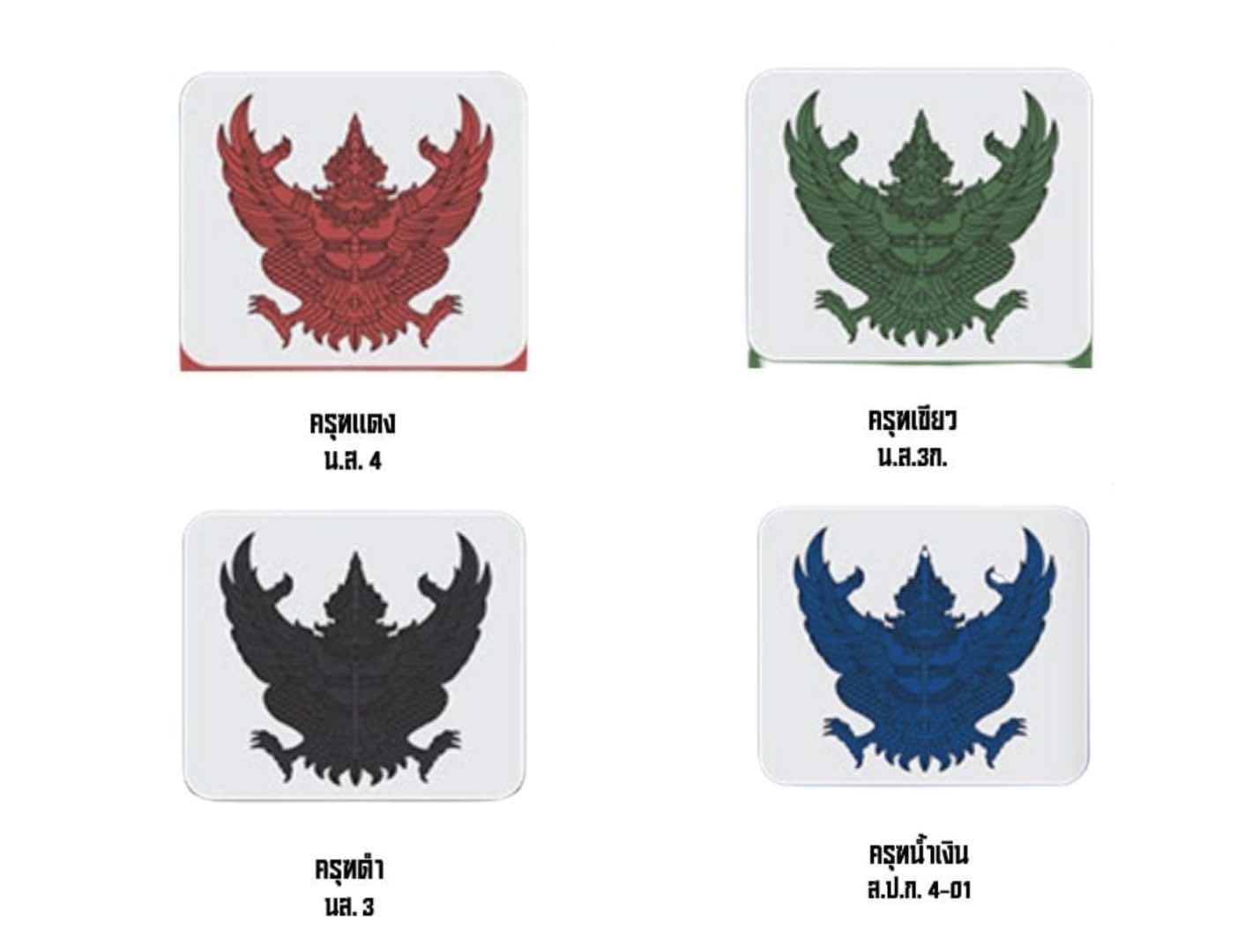Information about Thai Title Deed (Chanote) in Thailand
Ever since the establishment of Thailand’s Land Department in 1901, the government has issued land title deeds to private owners of real estate. The document guarantees and outlines ownership rights while providing information on the property such as dimensions, conditions, and ownership history.
Because there are several types – some with more rights than others – knowing which one you possess and what rights are associated with it is crucial. Learn all about the land title deed and how it can impact you in this article. It provides a step-by-step guide to the various title deed processes, helping you to maximize results with fewer resources.
What Are the Benefits of Owning a Title Deed?
The 6 main benefits of owning a land title deed are as follows:
- Provides legal proof of real estate ownership.
- Needed for registering property at the Land Office.
- Serves as a form of identity verification, making various government and private procedures easier including house book registration (Tabien Baan) and applications for building permits.
- Serves as collateral in loan applications in some cases.
- Crucial for real estate investment in Thailand as it’s required when transferring or selling property.
- Clarifies land info and details, making disputes less easier to resolve.
What Types of Title Deed Are There in Thailand?
There are 7 types of title deeds currently or formerly issued by the Land Department in Thailand. In relative order of least to most influential rights, they are:
- Sor Kor 1 (Neung) – Generally these apply to land used for farming and have no real rights associated with them. You may be able to upgrade these to Nor Sor 3, Nor Sor 3 Gor, or Nor Sor 4 Jor for expanded rights depending on the land’s location.
- Nor Sor 5 (Ha) – A document that verifies rights to the land of the Sor Kor 1 holder. When held together, these two documents allow the holder to sell or transfer said property outside of inheritance.
- Nor Sor 2 (Song) – Letter granting temporary, but limited (cannot be sold or transferred except for inheritance), rights to the land for 3 years. The holder must begin using the land within 6 months of receiving permission and may be able to upgrade to a different deed depending on the location.
- Nor Sor 3 (Saam) – Gives the right to possess and use land, but not full ownership. The land’s dimensions won’t be as well recorded (no parcel points or concrete posts that outline land) which can lead to disputes. However, this title deed allows selling (subject to a 30 day public notice of intention to sell), leasing, and building on the land given government approval.
- Nor Sor 3 (Saam) Gor – An improved version of N.S.3. In this case, land is inspected and parcel points set via an aerial survey. You can then subdivide the land into smaller plots and can sell or build on the land without the 30-day public notice.
- Nor Sor 3 (Saam) Khor – The same rules apply as for Nor Sor 3 Gor, but parcel points are not.
- Nor Sor 4 (Si) Jor, or Chanote – This is the only document that provides full, true legal ownership rights to a property. Under the chanote title deed, the area is more accurately measured using satellite imaging as part of a larger national land survey.
What Is Sor Kor 1 and Nor Sor 2 and What’s the Difference Between Them?
Sor Kor 1 is a certificate granting land use rights, but no actual ownership rights on its own. Nor Sor 2 is a temporary land ownership certificate that lasts up to three years as long as you begin using the land within 6 months of registering the certificate.
Both certificates may be upgraded to higher level land title deeds such as the Nor Sor 3 and above. However, Sor Kor 1 certificates require court approval and additional documentation in the form of Nor Sor 5 verification. The main difference between these two is that Nor Sor 2 properties cannot be sold or transferred even after upgrading the status of the deed.
Possession and Rights Associated With Land Title Deeds (Nor Sor 3)
Holding a Nor Sor 3 (NS-3) title deed means that you have possession of a piece of land, but not full ownership rights. Because this title deed doesn’t include accurate land measurements, it’s considered a stepping stone toward applying for a proper land survey and full ownership (Nor Sor 4 Jor).
Those who possess a Nor Sor 3 document can sell or transfer the property, but they must make this intention public for 30 days before confirming the sale.
What Is the Difference Between Nor Sor 3 Gor and Khor?
The difference between Nor Sor 3 Gor (N.S.3.G) and Khor (N.S.3.K) is that parcel points are not measured and associated with the Khor version of the document. This is unfavorable as it can lead to disputes with neighboring plots when selling, partitioning, or building on the land.
Ownership of a Condominium Freehold Title Deed, or Nor Sor 4
Ownership of a condominium freehold title deed, or Nor Sor 4, means full ownership of the condominium in question. The condo title deed lists the details of the condominium complex as well as the dimensions of the specific unit owned. It also lists the ratio of joint-owned space which includes areas like hallways, stairs, gardens, and more.
Ownership of Land Title Deed, or Nor Sor 4 Jor
Ownership of land title deed, or Nor Sor 4 Jor (known as Chanote), grants full ownership rights to the holder. In this case, the land’s boundaries are precisely established using satellite imaging and physical marking posts in the ground with numbers that correspond to those in the deed.
If you’re listed as an owner on a Chanote, your rights to the land in question are indisputable according to Thai property and tax law. That means that you can build on, divide, or transfer ownership to the land as you please.
Are Foreigners Allowed To Own Land in Thailand?
Yes, foreigners are allowed to own land in Thailand under certain conditions. One way is to purchase land via a Thai-registered company.
Another option comes from section 96 of the Land Code Act which states that an investment in local Thai qualified assets of at least 40 million Thai Baht from abroad over a period of five years makes that individual foreigners eligible to purchase up to 1 rai (1,600 square meters or 400 square wah or 0.3953 acre or 17,222 square feet) of land, subject to the Board of Investment approval. One of the easiest ways to go this route is by investing in Thai government bonds.
The most common way for foreigners to legally own real estate in Thailand is via an individual Freehold condominium, limited to 49% of the total floor area of a condominium.
Rights Associated With Holding a Land Title Deed (Nor Sor 5)
Nor Sor 5 is a separate document that verifies the rights of the holder of a Sor Kor 1 certificate. When both Nor Sor 5 and Sor Kor 1 are held by the same person, they have the right to sell or transfer the land outside of inheritance.
What Land Classification Exists in Thailand?
The 2 main land classifications that exist in Thailand are state and private land. State land can be further broken up into:
- State property owned by government arms such as the Treasury Department and Ministry of Finance.
- National forest reserve.
- 1975 Agricultural Land Reform Act land designated for farmers.
- Public utility land such as public parks.
Private land makes up the second classification and can be broken down into land with various levels of ownership rights (such as a Nor Sor 4 Jor title deed).
How To Convert Thai Land Measurements Like Rai, Ngan, and Wah to Square Meters?
To convert Thai land measurements like rai, ngan, and wah to square meters, use the following ratios:
- 1 rai = 1,600 sqm
- 1 ngan = 400 sqm
- 1 wah = 4 sqm
What Details Should You Verify on the Title Deed?
You should verify the 5 main following details on the title deed of any property you own or are hoping to acquire:
- The list of owners. If you’re looking to secure the transfer of a title deed, ensure that the person you’re speaking to is the most recently listed owner on the deed.
- The type of Garuda (the human-bird at the top). Red is the one that provides full ownership rights.
- The possibility of red markings on the back. If present, these can indicate conditions like no-sell periods to be aware of. Confirm these before completing a transfer.
- The clarity of details. This includes the title deed number, land plot image, owner details, and any other information contained within.
- Confirm the property shape matches what’s visible on Google Maps or Thai survey information online.
What Is the Meaning of Each Title Deed’s Garuda Color?
Each Garuda color on a title deed has a different meaning that corresponds with a certain set of ownership or occupant rights.
What Is the Red Garuda?
The red Garuda can be found at the top of the Nor Sor 4 Jor, or Chanote. This represents full ownership of the land associated with the title deed.
What Is the Green Garuda?
The green Garuda can be found at the top of the Nor Sor 3 Gor title deed. This is a step below the Chanote in terms of ownership rights.
What Is the Black Garuda?
The black Garuda can be found at the top of the Nor Sor 3 Khor title deed. The same rules apply as Nor Sor 3 Gor, but without proper parcel points outlining the land.
What Is the Blue Garuda?
The blue Garuda can be found at the top of the Sor Nor 1 document. These have not been issued since 1972.

Frequently Asked Questions
How To Check if a Title Deed Is Fake
To check if a title deed is fake, take the following steps:
- Hold the paper up to a light. You should be able to see a watermark consisting of a Garuda within a double circle.
- Check for tiny holes in the four corners of the land area illustration. They should be within small circles.
- Ensure the office’s signature on the deed is in black ink – blue or any other color – and check that there’s an official red stamp on top of the signature.
- Take the document along with copies of your ID and house registration book to the local land office for confirmation.
How To Request a New Title Deed if You’ve Lost One
To request a new title deed in the event that you’ve lost one, take the following steps:
- File a police report.
- Gather copies of your ID and house registration book along with any documents related to the property such as a purchase and sale agreement or lease agreements. Other documents may include a death certificate of the previous owner if the land was inherited and a court order if the replacement deed was requested by a court.
- Arrange two witnesses to corroborate your situation. They must have national ID cards and be willing to sign statements.
- Go to the Land Office associated with your property’s jurisdiction with your documents and witnesses.
- Complete necessary forms and payments and wait. The office will confirm the land in question and if everything is okay, they’ll put a public 30-day notice up informing of the intention to issue a substitute land title deed.
- If there are no objections, a substitute deed will be issued.
What Do the Comments in Red on the Back of the Title Deed Mean?
The comments in red on the back of the title deed refer to restrictions on the transfer of the property until a specific date. Once that date is reached, the property can be transferred.
What Can I Do if My Title Deed Document Is Damaged?
You can request a new title deed if the original document is damaged. Take the following steps if you’re looking to have this done:
- Check to see the extent of the damage. If the land parcel identification number along with the name and stamp of the signing officer are still legible, the process is simplified and you can take it to the Land Office with your ID.
- If the document is unreadable, you’ll need to file a police report.
- Follow the same steps that you would for a lost title deed.
For comprehensive Thai real estate services, reach out to PropertySights Real Estate today.

